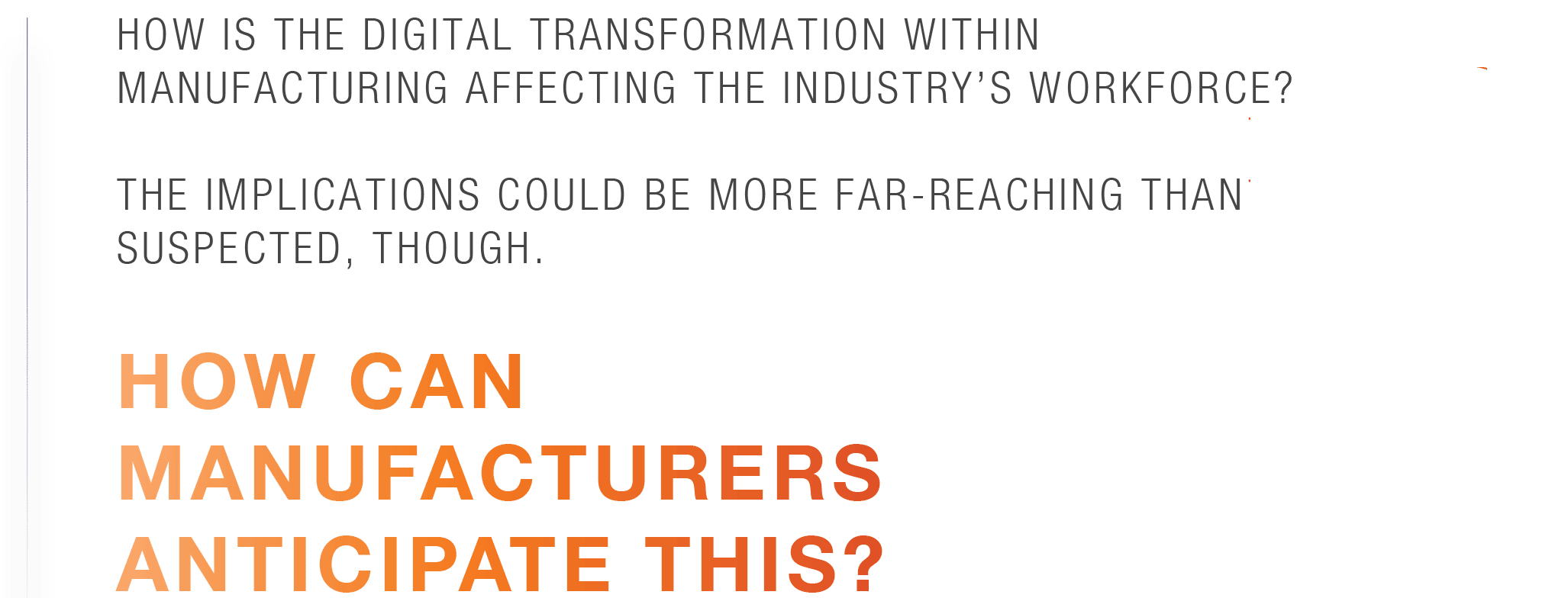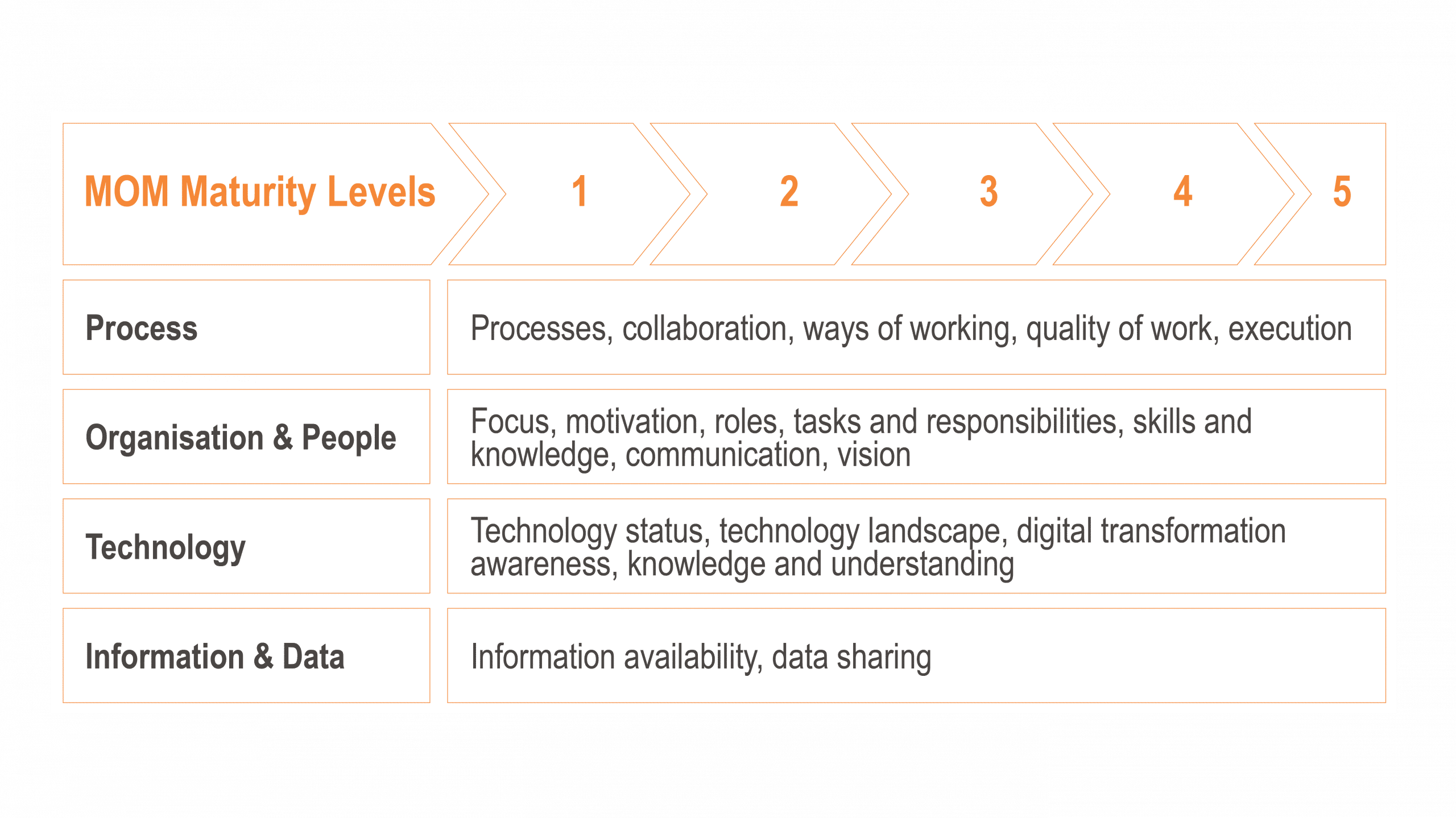DIGITAL TRANSFORMATION REQUIRES A DIFFERENT VIEW ON LABOUR


Digitization is top priority for the industry. Why? The continuously changing customer demand and increasing expectations for product diversity, quality, safety and sustainability. This requires efficient, effective and adaptive manufacturing processes.
The transformation to a desirable level of digitization is a major challenge for many companies. The phased and structured implementation of new technologies in the production domain that both fit the needs of the current situation and also contribute to desirable professionalism, is challenging enough.
The human factor plays an important role within manufacturing processes today and will continue to do so for the foreseeable future. Of course, the playing field is changing and a digitized production environment places different demands on workers in terms of knowledge and skill levels, but people will continue to be indispensable for manufacturers and production companies.
I am happy to share my vision and insights from years of working with manufacturing clients. Core to this vision: Digitalization of the production domain calls for focus on all POTI aspects (Process, Organisation, Technology and Information). This article focusses on the organizational or people aspect.

Figure 1: POTI aspects
What key workforce-related developments do we see?

Aging workforce.
Over the past decade, the labour force, measured by ages 15 to 75, has grown by more than half a million people. This growth will decrease to only 130 thousand people in the next 10 years. The effect of a higher retirement age is minimal. This means that the number of people between the ages 15 and 75 will also continue to decrease. At the same time, the proportion of older people within the labour force is increasing. In general, older workers work less often and also fewer hours per week. Whether this aging will lead to a shortage of workers depends on the number of people working, the number of hours that people work and labour productivity needs versus actual labour productivity (source CBS)
The digital transformation of the production domain will not result so much in higher labour productivity, but rather in higher labour efficiency and effectiveness. In other words: The ability to achieve the same production with less labour. But does that fully mitigate the adverse effects of aging? Digitalisation of the production domain requires a significant investment that will have to show returns, leading to pressure on the revenue model. Possible consequence is the need to produce more which again increases the need for labour….
Tight labour market.
Currently, the labour market is already tight. One of the implications of this for employers is the challenge of remaining relevant and interesting enough for the current population of employees. With the departure of employees, a lot of knowledge and experience often walks out the door, leading to capacity challenges, but also jeopardizing competitiveness. So it is important to retain existing employees. We see that turnover is relatively low in companies that continuously pay attention to employee well-being. However, employee well-being is not only influenced by primary and secondary benefits. Paying attention to the person behind the employee and their needs is also important: a sufficiently challenging role in line with the employee’s needs and capacity, including associated tasks and responsibilities keeps motivation and commitment high. This is exactly why the human factor is an important part of my vision. Fortunately, digital transformation offers plenty of opportunities for employees to advance to appropriate and challenging roles.
Need for knowledge retention and development.
A higher degree of digitisation within production requires personnel with a higher level of knowledge and competence. This does not necessarily mean different personnel, but it does mean that continued development of the skill and knowledge level of the current workforce should be high on the agenda of manufacturing companies in the industry. There will have to be a shift to a different type of workforce as the production environment continues to digitise. It is important to ensure the right balance between the “maturity” of the production environment and the duties and responsibilities of employees. A clear and concrete transition plan of digital production maturity helps tremendously in this regard.
Focus on recruitment of new employees remains as important as ever. More and more manufacturing companies are therefore looking to connect with colleges and universities to get students excited about jobs within manufacturing. When students can be involved early on in the process of digital transformation at manufacturing companies and make a significant contribution, it increases the likelihood for employers to hire them as employees thereafter.
Manufacturing companies suffer from the loss of valuable knowledge when employees leave and try to secure this knowledge in various ways. Digital transformation offers opportunities and solutions for this as well. Examples range from basic solutions such as securing knowledge in processes, flow charts and instructional videos. Similar solutions are often found in manufacturing companies that are still relatively low on the maturity ladder. But we also see the securing of valuable process knowledge using Digital Twins, Machine Learning and Artificial Intelligence being applied more and more. A positive consequence of the growth in digital maturity. Thus, by recording important process actions and events by employees, valuable information is retained for manufacturing companies.
Wrap up / Key Take-aways
Digital transformation is a must for manufacturing companies. On the one hand, to respond to rapidly changing market dynamics in order to maintain a competitive position and on the other, to increase labour productivity to compensate for the tightness in the labour market, partly due to an aging population.
Digital transformation is not just technology and data. A clear and concrete transition plan of digital manufacturing maturity includes all the four POTI aspects and guarantees necessary focus on the organization and employees of manufacturing companies. A phased approach consistent with vision and strategy provides solutions in the area of knowledge retention and development.